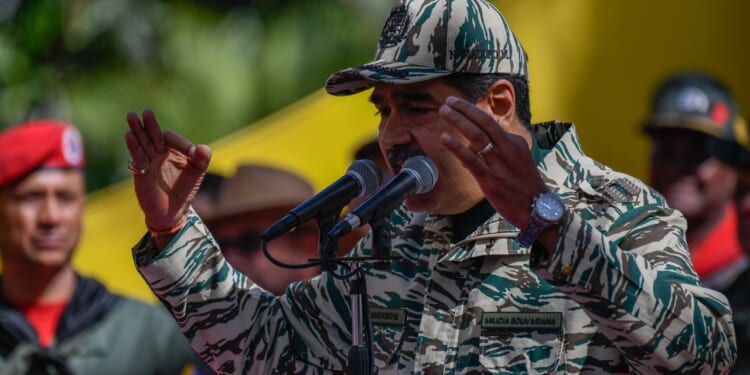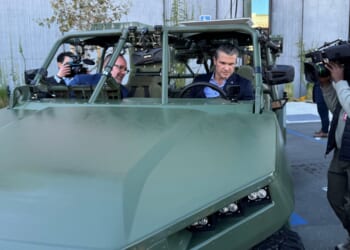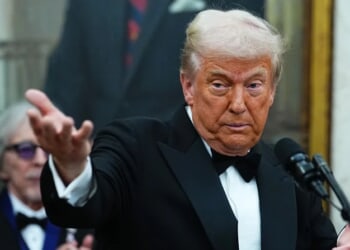An American foray into Venezuelan airspace would almost certainly provoke a full Suppression of Enemy Air Defenses (SEAD) operation—raising the political and operational threshold for US intervention.
Venezuela’s air defense network is one of the more robust in Latin America. Of course, Latin American countries are relatively unsophisticated compared to their North American counterparts. But for the Trump administration, which has been regularly brushing up against Venezuelan airspace with American strategic bombers, Venezuela’s denial capabilities are still worth noting—if not necessarily fearing.
Venezuela’s Air Defense Plan: Deterrence Through Denial
Venezuela’s air defense network mostly dates to the Hugo Chavez era, in which significant investments were made in Russian and Chinese arms. With an air defense system embodying deterrence through denial, the system blends long-range missile coverage, radar integration, and heavy interceptors in an effort to make the skies over Caracas and Maracay dangerous for an intruder, even the United States.
The most important tool in the Venezuelan air defense system is the Russian-exported S-300VM, a high-altitude, long-range SAM. Each S-300VM can track up to two hundred targets and engage aircraft or ballistic missiles within a range of about 250 kilometers. Complicating matters for an intruder, the S-300VM is mobile, with radar and launchers mounted on tracked vehicles. Venezuela uses its S-300VM systems to form an outer ring of aerial defense, which is vital for protecting key nodes like the capital, air bases, and the industrial corridor stretching through Venezuela’s coastal Aragua and Carabobo states. In short, the S-300VM offers Venezuela a denial capability that is quite rare in Latin America—which may help to explain why the recent US bomber runs have so far stopped short of actually entering Venezuelan airspace.
Complementing the S-300VMs are the Buk-M2E systems, also exported from Russia, providing a medium-range umbrella of about 45 kilometers. The Buk-M2E are also tracked and mobile, designed to defend against low-flying cruise missiles, drones, or tactical aircraft that slip under the S-300’s radar horizon. While less impressive than the S-300VM system, the Buk-M2E gives Venezuela redundancy and flexibility. And should the S-300VM or Buk-M2E fail, Venezuela still has the 35-kilometer ranged Pecora-2M system—plus a wide distribution of Igla-S man-portable missiles. Together, these integrated systems—from sophisticated SAMs to cheap man-portable missiles—form a layered defense concept featuring long-range strategic denial, medium-range area defense, and short-range point defense.
Informing the SAM systems is a radar network consisting of Chinese JYL-1 and JY-11B 3D radars, integrated with Russian fire-control systems. On paper, these are sophisticated systems capable of detecting and tracking incursions. But in practice, a combination of sanctions and spare-part shortages has likely eroded the systems’ reliability and response speed.
Venezuela Has Advanced Fighter Jets, Too
Venezuela’s denial system also features a fighter fleet. Most notably, it possesses about two dozen Russian-made Su-30MK2 Flanker fourth-generation fighters, roughly comparable to the F-16 Eagle. This makes Caracas an outlier in Latin America, which mostly uses American or European-made systems. Venezuela also has an aging F-16A/B fleet, but many of these aircraft have fallen into disrepair thanks to US embargoes on parts and software updates. Still, the Su-30MK2s give Venezuela a credible deterrent against small-scale incursions.
Venezuela has put together an air-defense belt that will make casual penetration of its airspace costly. An American foray into Venezuela proper would almost certainly provoke a full Suppression of Enemy Air Defenses (SEAD) operation. That deterrent effect raises the political and operational threshold for intervention. Still, it does not change the fundamentals: given US capabilities, Venezuelan defenses would be degraded and defeated over time, though not without significant initial friction and expense.
About the Author: Harrison Kass
Harrison Kass is a senior defense and national security writer at The National Interest. Kass is an attorney and former political candidate who joined the US Air Force as a pilot trainee before being medically discharged. He focuses on military strategy, aerospace, and global security affairs. He holds a JD from the University of Oregon and a master’s in Global Journalism and International Relations from NYU.
Image: Shutterstock / StringerAL.


















